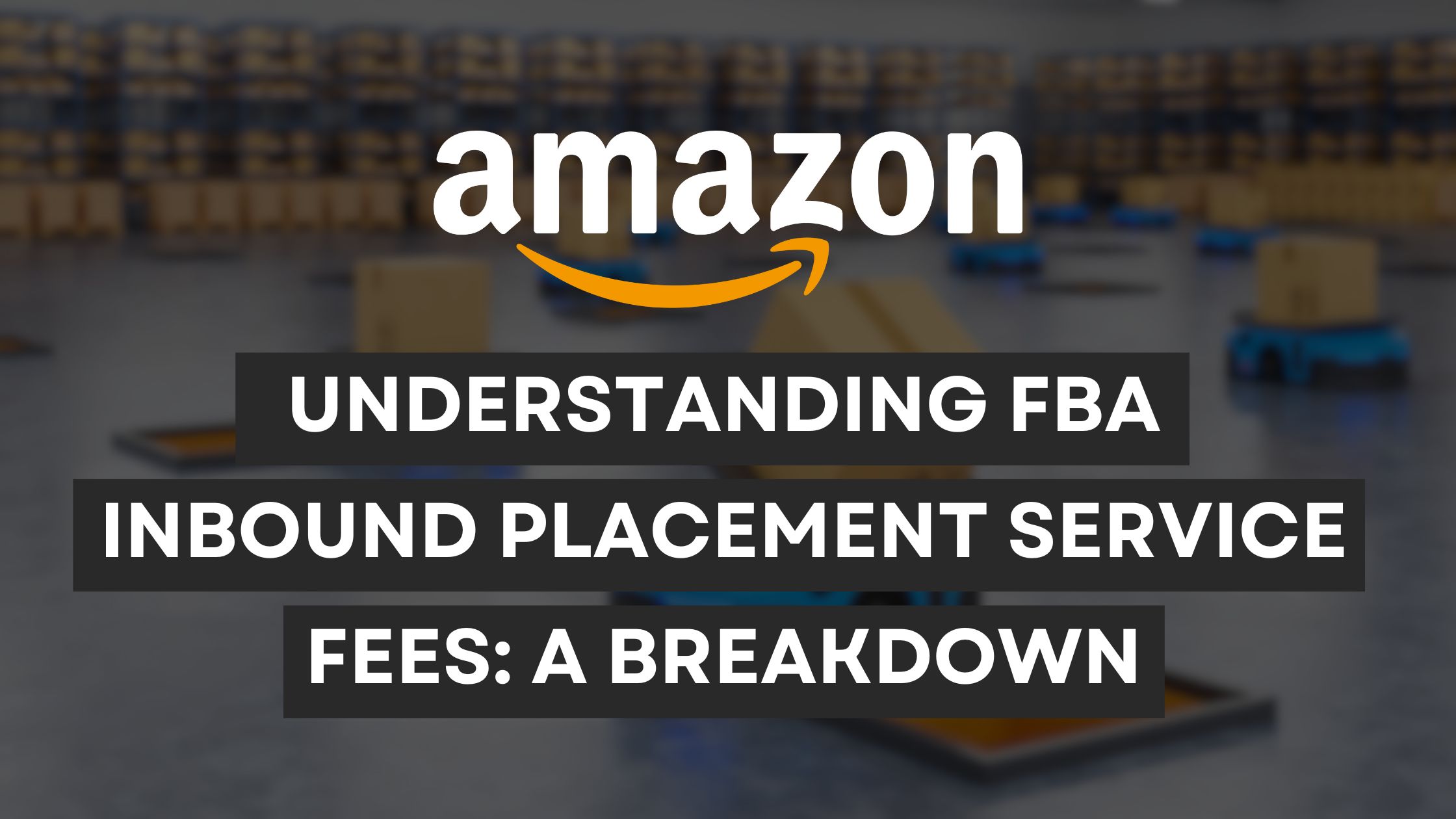The FBA Inbound Placement Service Fee helps Amazon distribute your inventory across their fulfillment network, potentially leading to faster delivery times for your customers. Here’s how the fee is calculated:
- Product Size: The fee varies depending on the size of your product. This can be categorized as small standard, large standard, or large and bulky.
- Weight: For small standard-sized items, the fee is based on the unit weight. For larger items (large standard and large & bulky), the fee is based on the greater value between the unit weight and the dimensional weight. (Dimensional weight takes into account the size of the package, not just its weight.)
- Number of Fulfillment Centers: The fee depends on how many fulfillment centers your inventory is sent to. There are three options:
- Minimum: Your inventory is sent to the least number of fulfillment centers necessary. Amazon will then spread it out within their network for a fee.
- Partial: You choose a specific number of fulfillment centers (2 or 3) and Amazon will distribute your inventory accordingly.
- Amazon-Optimized: Amazon will distribute your inventory across their network based on what they believe will be most efficient for faster delivery times. This option typically has the highest fee.
- Inbound Location: The fee can also vary depending on the specific fulfillment center location your inventory is being sent to. For example, shipments going to the western United States may incur higher fees compared to other regions.
Key Takeaways:
- The FBA Inbound Placement Service Fee is based on a combination of factors.
- Consider product size, weight, the number of fulfillment centers you choose, and the location of those centers.
- For cost-effectiveness, compare the fee against potential benefits in terms of faster delivery times and improved customer satisfaction.
2024 Fee for Standard-Size Inbound Placement Service

(Source: Amazon Seller Central)
Attention Suppliers: Inbound Defect Fee Update
Effective March 1, 2024, inbound defect fees will be implemented for shipments not adhering to our designated fulfillment center and shipping plan. This includes products sent to the wrong location or incomplete shipments.
Reminder: Inbound Defect Fees Effective March 1, 2024
As a reminder, inbound defect fees will be implemented for all supplier shipments starting March 1, 2024. These fees will apply to:
- Shipments sent to an incorrect fulfillment center.
- Incomplete shipments (missing designated products).
Please ensure all teams responsible for supplier communication and order processing are aware of this change. We recommend reviewing the updated shipping guidelines with all relevant suppliers to avoid any disruptions.
Additionally, you can consider:
- Highlighting the benefits of adhering to the new guidelines (e.g., faster processing times, reduced errors).
- Offering training or resources to suppliers to help them comply with the new requirements.
Attention Sellers: New Fees for Incorrect or Incomplete FBA Shipments
Starting March 1, 2024 (or specific date), there will be new fees for shipments sent to Amazon fulfillment centers that don’t follow your designated plan. This includes:
- Sending products to the wrong fulfillment center.
- Shipments missing designated items (deleted or discarded).
These are called “inbound defect fees“ and cover the extra costs of handling these shipments, such as redirecting them, receiving them, and processing them.
Here’s what you need to know:
- Fees depend on product size and may be higher than originally estimated.
- To avoid these fees, ensure your shipments match your designated fulfillment center and shipping plan.
Avoid These Issues to Ensure Smooth FBA Deliveries:
- Wrong Fulfillment Center: Double-check your shipping plan! Fees apply if shipments end up at a different fulfillment center than designated.
- Missing or Lost Shipments: We understand delays happen. However, shipments within the US that haven’t arrived within 45 days (75 days internationally) after creation, and additional shipments in multi-destination plans that miss the 30-day mark after the first shipment, will be considered lost.
Keeping your shipments on track helps us get your products to customers faster. For more information on avoiding these issues, please refer to our FBA inbound fulfilment guidelines
2024 Fee for Big-Size Heavy-Weight Inbound Placement Service

(Source: Amazon Seller Central)
We’re introducing low-inventory-level fees to encourage keeping popular standard-size products in stock and meeting customer demand. These fees apply to products that consistently run low compared to how often they sell.
Here’s what you need to know:
- The fees target sellers who:
- Don’t ship products quickly enough.
- Consistently maintain low FBA inventory levels.
- We track inventory levels over two periods:
- Long-term (past 90 days)
- Short-term (past 30 days)
- Avoid the fees by keeping at least 4 weeks of inventory on hand (this may vary depending on your sales volume).
- Fees are only charged if both long-term and short-term supply days fall below 28 days.
For example: If your short-term supply is low (under 28 days) but your long-term supply is healthy (over 28 days), you won’t be charged a fee.
Keeping your products in stock benefits both you and your customers! Avoid these fees and ensure happy customers by maintaining healthy inventory levels.
We consider a few factors when assessing whether you might incur low-inventory-level fees:
- Product Size: Generally, standard-sized products are more likely to be impacted by this fee.
- Past Sales Data: We analyze your product’s sales history to estimate customer demand.
- Amazon Supply Days: This metric reflects the average number of days your current inventory can meet customer demand, based on past sales data.
Think of “Amazon Supply Days” as a way to gauge your inventory health. If your supply days consistently fall below a certain threshold (typically 28 days), it might be time to restock to avoid potential fees.
2024 Low-Inventory-Level Fee

(Source: Amazon Seller Central)
Reference Link: Inbound defect fees, Amazon
Visit Here: Amazon Fee 2024
